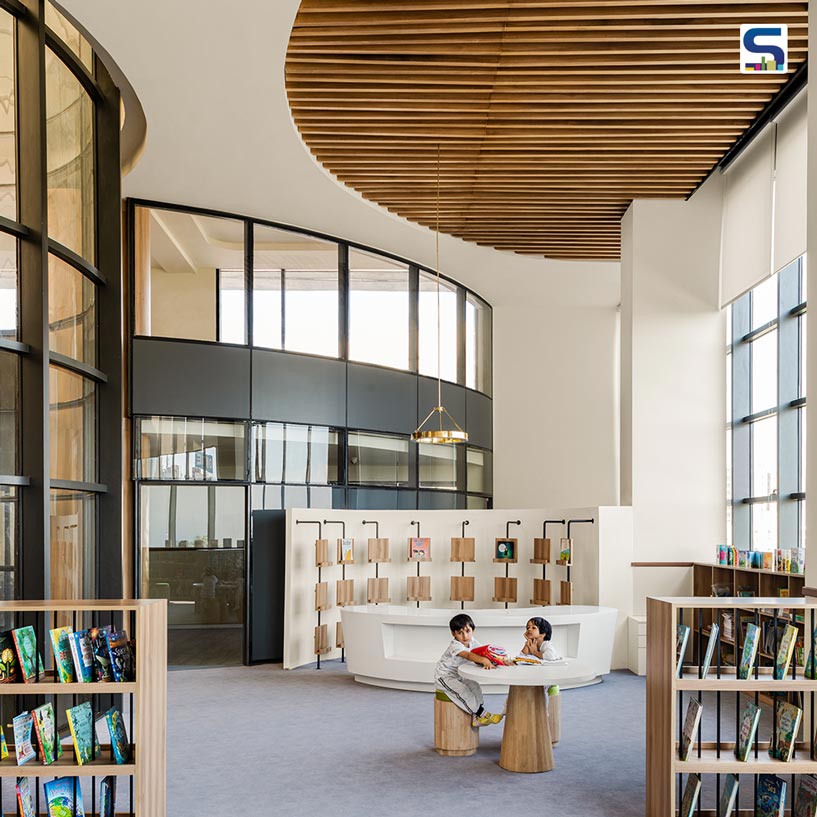
Studies say that children's cognitive agility and social skills are highly enhanced when they are allowed to move freely. Stepping away from the monotonous approach of boxed classrooms, Vijay Gupta Architects (VGA) has envisaged and designed Vedanya School in Sector 48, Gurugram, to maximize movability and openness through curvilinear spaces, double-height volumes and vertical and horizontal interconnections. The architect tells SURFACES REPORTER (SR) how they used architecture as a catalyst to augment learning experiences. Read on:
Also Read: Rhythmic Twist and Turn of Cubical Blocks Define Sanskruti Pre-Primary School | Karnataka
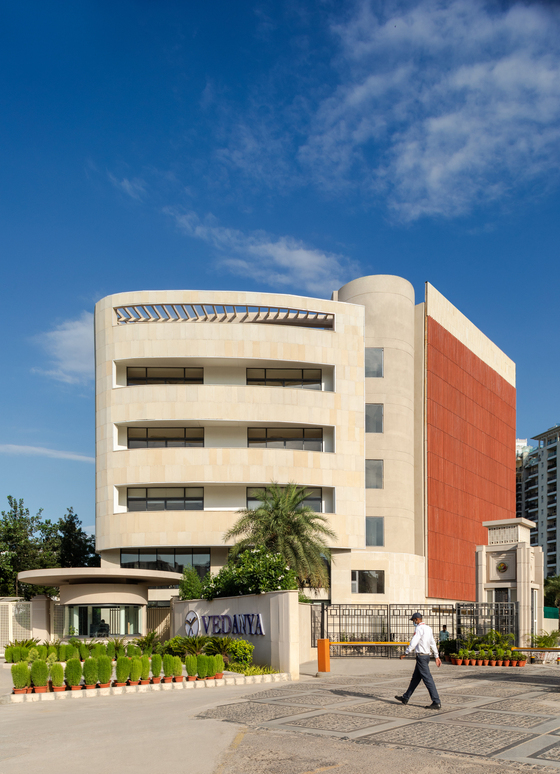
As paradigms of primary education evolve, architecture is increasingly seen to be a driving force in curating decent learning environments. Located in Sector 48, Gurugram, the Vedanya School sets a precedent for how architecture can positively influence children's schooling journey, acting as a catalyst for learning. Designed for primary students, it aims to foster interactive and playful spaces that enable an uninhibited learning experience.
Major Challenge While Executing Design
The project's key challenge was building on an existing structure's compact footprint. The clients aspired to create a futuristic and innovative school where children are excited to learn and be.
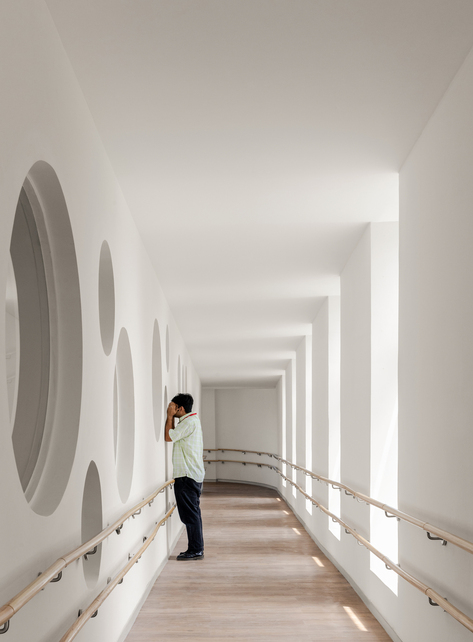 As a response, the design intends to create a playful environment that enables diverse exploration and activity opportunities. Further, it is designed to allow kids to move freely.
As a response, the design intends to create a playful environment that enables diverse exploration and activity opportunities. Further, it is designed to allow kids to move freely.
Spatial Layout
The school has a simple layout with functions on either side of a central atrium. Upon entrance, one steps into a double-height reception, which also acts as a spacious and well-lit seating area. On the right are admin areas, an SEN room, an infirmary, the principal's cabin and the conference room. A double-height space on the left acts as an outdoor learning and play area, offsetting the lack of a campus-style playground.
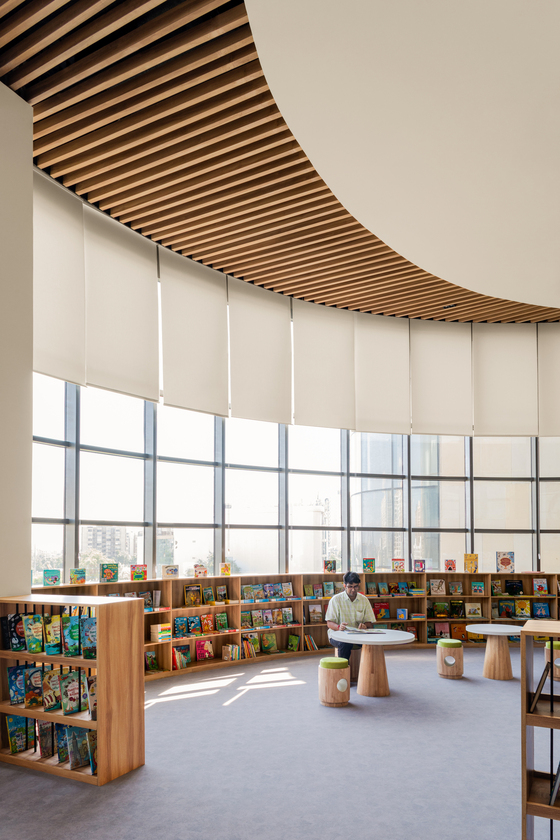 A central corridor, curving and open in nature, is conceptualised as an activity area rather than a passageway where children can learn and play. The atrium in the center visually opens up the vertical spine of the school, where all the upper floors are walled in glazing. These internal glass walls, curving on the footprint of the central corridor, transform the school's experiential quality and creates seamless connections between spaces.
A central corridor, curving and open in nature, is conceptualised as an activity area rather than a passageway where children can learn and play. The atrium in the center visually opens up the vertical spine of the school, where all the upper floors are walled in glazing. These internal glass walls, curving on the footprint of the central corridor, transform the school's experiential quality and creates seamless connections between spaces.
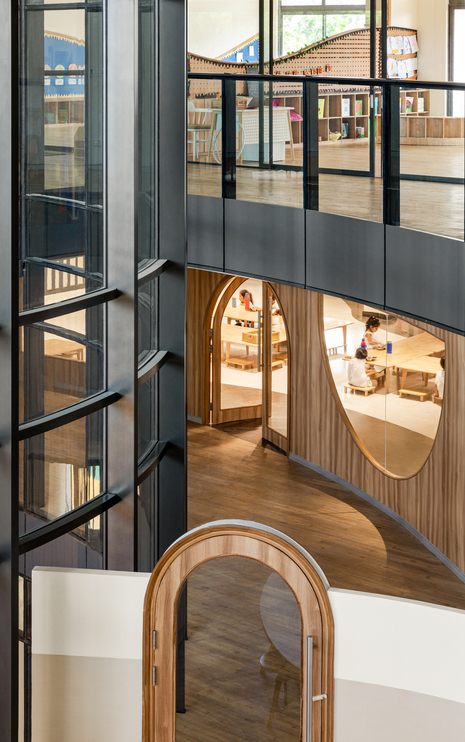
A staircase at the right of the reception leads to the upper floors. Located at the northern end, is a ramp designed with a playful division wall to place tactile art and devices for sensory exploration. On the first floor, a spacious dining room accommodates the right end and a double-height maker's lab is on the left. Looking down onto the atrium, this spacious room fosters interesting visual connectivity with the outdoor play area.
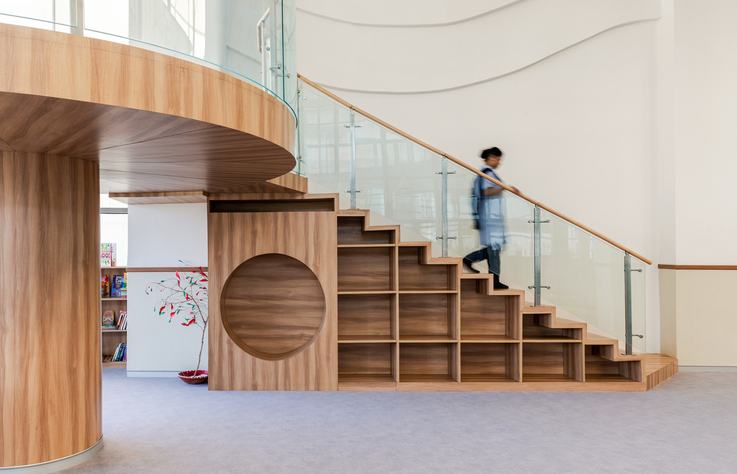 On the upper floors, classrooms are located on the southern and northwestern sides of the building, opening out onto small terraces. On every floor, double-height activity rooms overlook the atrium through full-length glazing. Placed alternatingly on either side of the atrium, these include a music and movement room, a student's performing area and a spacious library. High ceilings, and transparent, curving volumes enable a sense of openness where children don't feel restricted.
On the upper floors, classrooms are located on the southern and northwestern sides of the building, opening out onto small terraces. On every floor, double-height activity rooms overlook the atrium through full-length glazing. Placed alternatingly on either side of the atrium, these include a music and movement room, a student's performing area and a spacious library. High ceilings, and transparent, curving volumes enable a sense of openness where children don't feel restricted.
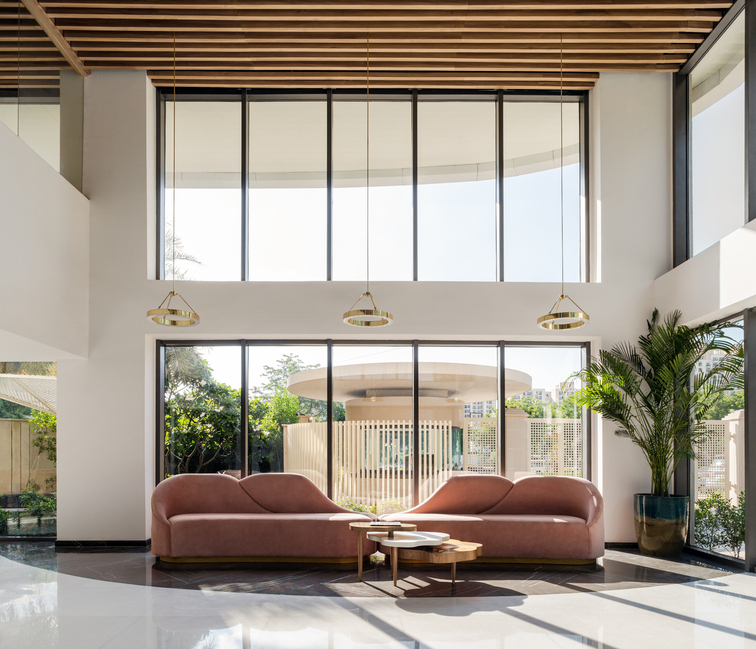 Catalysing interactions between students, this visual connectivity between classes is designed to expand children's modes of expression and instigate self-learning.
Catalysing interactions between students, this visual connectivity between classes is designed to expand children's modes of expression and instigate self-learning.
Earthy Palette in the Interiors
The interiors of classrooms use colours optimally, with muted and earthy tones. The design focuses on the visual and tactile stimuli of wall and furniture surfaces.
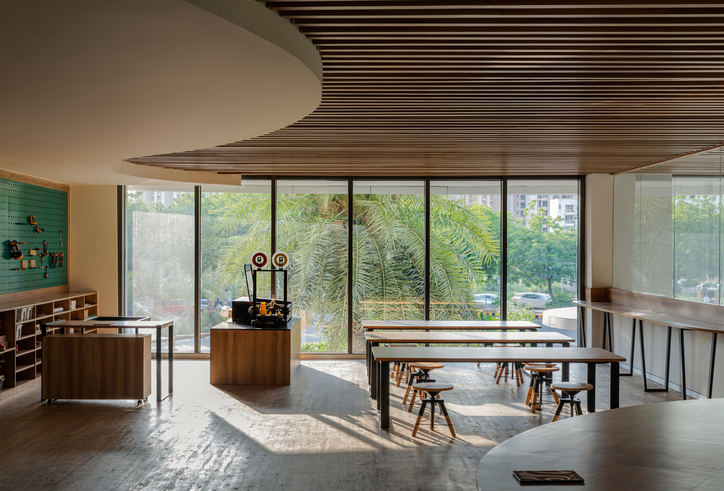 Light-toned finishes of wood, pastel colours, and the interior glazing create a neutral palette that enables children to make their own choices without any bias of colour.
Light-toned finishes of wood, pastel colours, and the interior glazing create a neutral palette that enables children to make their own choices without any bias of colour.
Subverting Conventional Building Design
Additionally, the design subverts the traditional typology of boxed classrooms with concepts like 'peekaboo' windows, where a child can peek inside another classroom when they are bored.
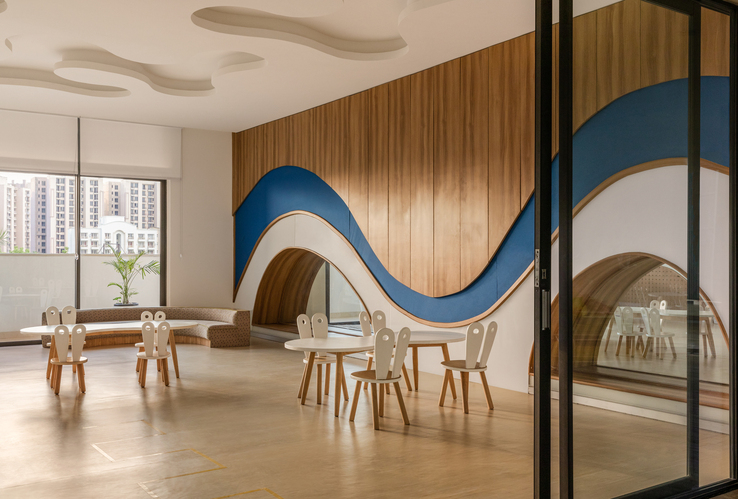
Also Read: A Playful Mix of Punctures and Louvres Characterize Amity International School | Mohali | VGA
Assimilation of Passive Techniques
Incorporating passive-climate strategies, sustainability is not just an add-on to the building but an integral part of the planning process. The building's south sides have deep recesses and balconies, and service cores are planned on the west, blocking the harsh sun on this end. The northern side has extensive glazing on all floors bringing in pleasant natural light throughout the day, reducing the need for artificial light. The central atrium, coupled with glazing on the interior walls, ensures that diffused light travels through the deep ends of the building.
 With a sharp focus on young children's temperament and explorative nature, the design of Vedanya School exemplifies a sensitive approach to promoting transparency and enabling unfettered movement. With curvilinear spaces and interconnectedness fostered by the atrium and internal glazing, architecture becomes integral to augmenting educational experiences. Considering the cognitive and physical exposures that children may encounter, the school is designed for holistic development, invigorating their journey through their early years.
With a sharp focus on young children's temperament and explorative nature, the design of Vedanya School exemplifies a sensitive approach to promoting transparency and enabling unfettered movement. With curvilinear spaces and interconnectedness fostered by the atrium and internal glazing, architecture becomes integral to augmenting educational experiences. Considering the cognitive and physical exposures that children may encounter, the school is designed for holistic development, invigorating their journey through their early years.
Project Details
Typology: Institutional
Name of Project: Vedanya School
Location: Sector 48, Gurugram
Principal Architect: Saurabh Gupta
Interior Design: Akanksha Gupta
Site Area: 2500sqm
Built-Up Area: 5000 sqm
Completion Date: March 2022
Photographer: Suryan Dang